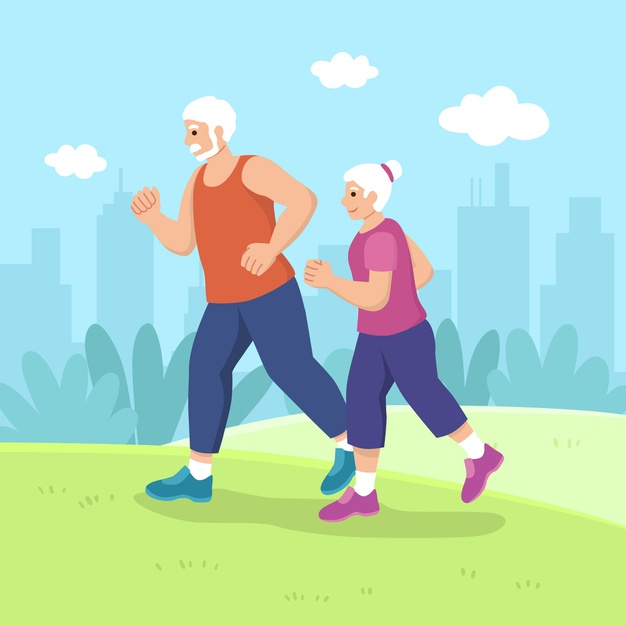~ by Carol Vartuli
If you’re a person of ‘Seniority’ you have probably walked many more miles than people do today—of necessity. In fact, you likely remember the old refrain: “When I was your age, I used to walk five miles to school, uphill, both ways.” Perhaps you even used that refrain on your own children or grandchildren whenever they protested ‘it’s too far to walk!’
According to a Mayo Clinic study, 50 to 70 percent of our population spends six or more hours sitting each day, and that lack of movement is linked to diabetes, cognitive decline, physical disability, certain cancers, and even shorter life expectancy.
Walking is one of the safest and most effective exercises for seniors. You don’t need to hike five miles. Just ten minutes of walking at a time, done regularly, can add up to benefits for your physical health.
What are the Physical Benefits?
Your heart is a big recipient of walking’s benefits. Getting your heart rate up and the blood flowing reduces the risk of high blood pressure and high cholesterol. It strengthens the heart muscle.
A 15-minute walk after eating reduces the after-eating spikes in blood sugar that some seniors experience. Your body uses sugar more effectively to strengthen your muscles and insulin works better.
Walking tones your leg and abdominal muscles (and arm muscles if you pump them). Toned muscles increase range of motion, and shifts pressure from your joints to muscles.
The Arthritis Foundation tells us that the majority of joint cartilage gets its nutrition from joint fluid that circulates as we move. “Movement and compression from walking “squishes” the cartilage, bringing oxygen and nutrients into the area.” This means less pain, and better function. Walking just three times a week for 20 minutes, for example, can reduce chronic lower back pain.
Walking also helps protect your bones. Orthopedist Michael A. Schwartz (Plancher Orthopedics & Sports Medicine in NY) advises that walking can stop bone loss, or osteoporosis. That is an important for preventing hip fractures.
Of course, there is a strong correlation between physical exercise and mental health, because exercise promotes the release of endorphins (the feel-good hormone) in the brain. That reduces anxiety and elevates mood.
Walking can be a social endeavor too, and is an exercise compatible with chatting. Having a walking buddy can encourage longer, more pleasurable outings. Even if you walk solo, you increase your chances of meeting fellow travelers, and potential new friends, along the way.
Importantly, studies indicate that walking may lower your risk of developing dementia and Alzheimer’s disease. The University of Virginia Health System, for example, found that “men between the ages of 71 and 93 who walked more than a quarter mile per day had half the incidences of dementia than those who walked less.”
Walking provides a multitude of benefits. Plus, it’s free, and requires only a sturdy pair of shoes. Best of all, the beauties of nature surround us, and are endless, and ever changing.
The information in the above article is not intended nor implied to be a substitute for professional medical advice, diagnosis, or treatment. Always seek the advice of your physician or other qualified health provider with any questions you may have regarding a medical condition.
